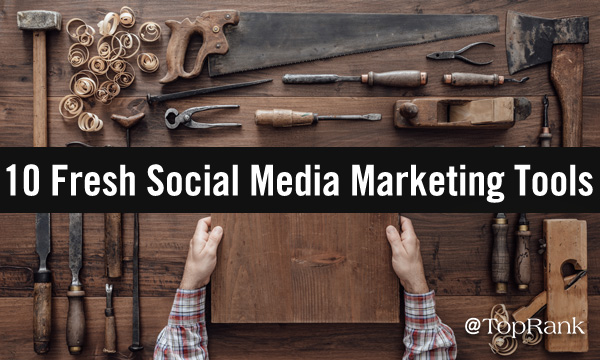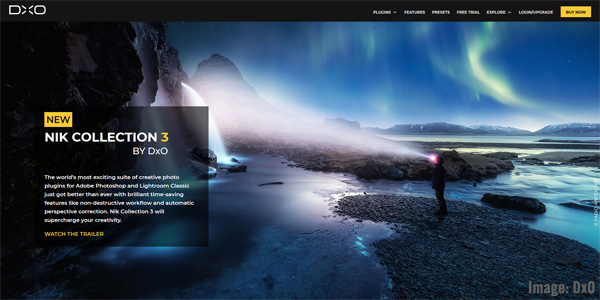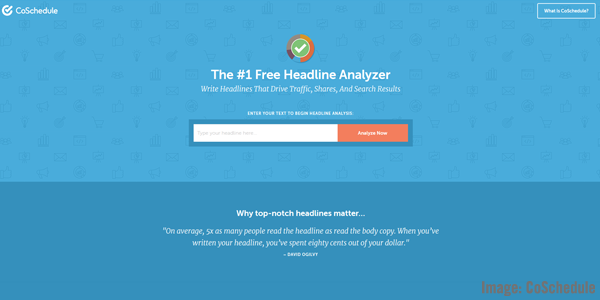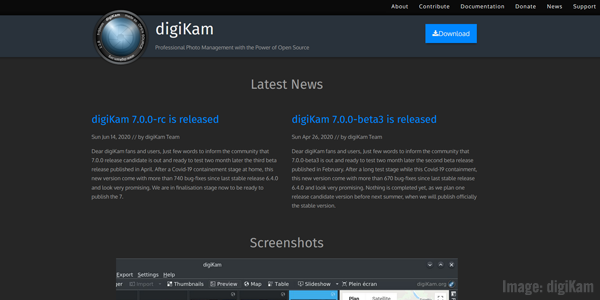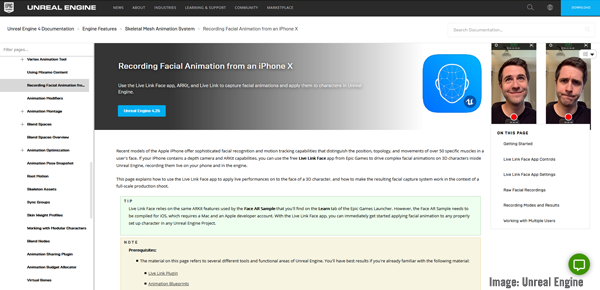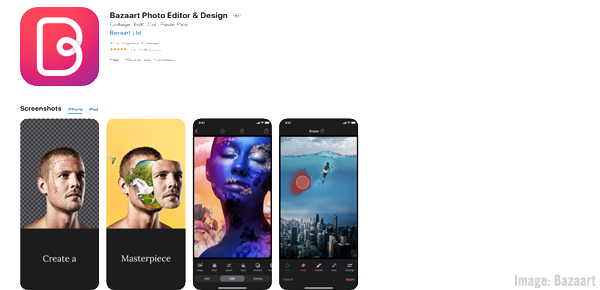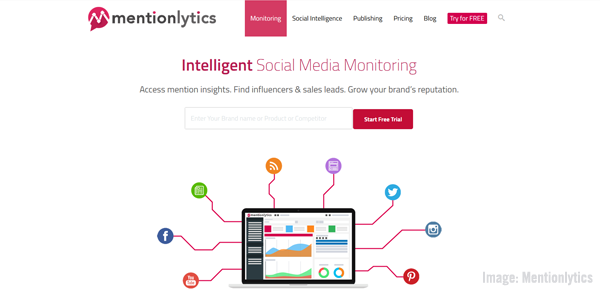By Lisa Anthony
These tools and apps have features that can help small-business owners automate marketing tasks and track the success of their efforts.
Marketing tools can help small businesses maximize their marketing efforts to reach customers, build their brand and drive sales. These tools — including online marketing services, digital platforms and apps — can provide automated features to improve efficiency, plus analytics and reporting to monitor your return on investment. Here’s a look at some of the best marketing tools.
Email marketing tools
Email marketing can be a cost-effective way for a small business to promote its brand, develop relationships with new customers and increase sales. Software can simplify the process through features such as email templates, A/B testing options, lead capture forms for your website, and reports. There are a lot of email marketing software platforms to choose from, but here are our top picks:
-
Mailchimp: Our pick for best overall email marketing software, Mailchimp’s paid plans offer templates, testing, landing pages, forms and reports as well as access to creative design tools and 24/7 support. Paid plans start at $13 per month, and there’s a free option with limited features.
-
Constant Contact: If you’re looking for a free trial, Constant Contact has one of the best — 60 days with no credit card information required. In addition to solid email features, it can help with social media marketing. Plans start at $12 per month.
-
Campaigner: For businesses that want a more advanced platform, Campaigner offers features such as a full code editor, conversion tracking, a Facebook audience builder and a getting started video tutorial. Plans start at $59 per month with a free 30-day trial.
Content marketing tools
Well-written, engaging content is key to a successful marketing campaign. These tools, which use artificial intelligence, can help you write content for blogs, newsletters, videos and social media posts to get the attention of your audience:
-
Simplified: Simplified offers free features such as a content rewriter tool, a company bio generator and an AI writing assistant, plus additional paid features that can help you create content for your website, blog and social media.
-
Grammarly Business: Grammarly can help you write mistake-free content for your website, social media, documents, messages and emails. The free plan offers basic features. Sentence rewrites, word choice options and other advanced features are available in the business version at $15 per month per person.
SMS marketing tools
Short Message Service, or SMS, marketing is a way for small businesses to share product information, promotions and upcoming events with their customers via text message. SMS marketing software can automate the process with design tools, website forms and other features. Here are our top picks:
-
SimpleTexting: Unlimited contacts and keywords, a graphic generator tool and template options are just some of the features that make SimpleTexting our top SMS marketing tool. Plans start at $29 per month with a free 14-day trial.
-
SlickText: For small businesses that want to use SMS for promotions, SlickText stands out for engagement features such as contests, surveys, promo codes, coupons and loyalty reward options. Plans start at $29 per month with a 14-day free trial available.
-
TextMagic: If a pay-as-you-go plan is better for your marketing budget, TextMagic lets you skip the monthly subscription fee and purchase prepaid credits that can be used when you want. Pricing starts at 4 cents per outgoing text, and a 30-day free trial is offered.
Website analytics tools
Understanding the behavior of visitors to your website allows you to optimize your content and reach your marketing goals of retaining customers, attracting new customers and increasing sales. The best analytics tools can help you look at key metrics such as page views and conversion rates and even offer details about competitors:
-
Google Analytics: Google Analytics offers free analytics and optimization tools to help you monitor the activity on your website. This includes acquisition, engagement and monetization reporting.
-
Lucky Orange: Lucky Orange is an optimization tool that provides analytics, but it also includes heat maps of user behavior, session recordings, surveys and visitor profiles at every plan level, including the free version. Paid plans start at $18 per month.
-
Semrush: For businesses looking for features such as competitor analysis and keyword research, Semrush offers them along with advertising and social media tools. Plans start at $119.95 monthly, and a free account is also available with limited features.
CRM tools
Customer relationship management, or CRM, tools do more than just store your contact database. The best CRM software can help you organize your contacts and collect information on potential customers interested in your products and services. Some software also has features that can help you manage a sales team.
-
Zoho CRM: Our top CRM pick offers features to help you collect and sort data, schedule tasks, manage sales pipelines and generate reports. Plans start at $20 per user per month, and a free version with full features is available for teams of three or fewer.
-
Salesforce CRM: This is a platform that can grow with your small business and includes features such as lead management, automatic data syncs and customizable reports. Plans start at $25 per user per month, and free trials are available at most plan levels.
-
Freshsales by Freshworks: For small businesses working on a tight budget, Freshsales’ Growth plan is free and allows for up to three CRM users. It includes solid features, such as personalized messages, contact scoring and sales management tools. Paid plans start at $18 per user per month with a 21-day free trial.
Digital marketing tools
When you’re using digital marketing methods to promote your small business and brand, software can help you automate your efforts and also track your return on investment.
-
Constant Contact: In addition to email marketing tools, Constant Contact also has features to assist you with social media marketing, digital ads and engagement reporting. Plans start at $12 per month.
-
Hubspot: After purchasing a plan, you’ll have access to email marketing tools, a landing page builder and an online form builder along with features that help you track performance. Marketing Hub plans start at $50 per month.
-
Keap: For businesses that want dedicated support, Keap offers customer-success managers at all plan levels to help you meet your digital marketing goals. Plans start at $189 per month.
Social media marketing tools
When you’re using multiple social media platforms to engage customers, reach new audiences and generate brand awareness, digital tools can make the management of your efforts easier through features such as automated scheduling, calendars and channel boosting.
-
Buffer: For businesses on a tight budget with three or fewer social channels, Buffer’s free plan may be the right fit for you. Post scheduling, calendar view, Instagram tagging, Twitter hashtag suggestions and Facebook page mentions are some notable features. Paid plans start at $6 per month per channel.
-
Zoho Social: If you’re managing one brand on 10 or fewer social media channels, Zoho Social offers multichannel publishing, content scheduling, an image editor, a publishing calendar, user tagging and summary reports. Plans start at $15 per month, and there’s a free version for one user.
-
Hootsuite: If you want an app with few limits and advanced features, check out Hootsuite. Notable features include unlimited posts, unlimited scheduling, a social content calendar, recommended publishing times, content curation tools, post boosting and analytics. Plans start at $99 per month, and a 30-day free trial is offered.
Design tools
Design tools can make it easier to create visually appealing graphics and videos for your marketing efforts. The best tools offer templates, image libraries and photo editing.
-
Canva Business: With built-in tools like a drag-and-drop editor, customizable templates, AI-powered design tools and free photos and graphics, Canva is a top pick. A free plan is available, and paid options start at $12.99 per month per person.
-
Adobe Lightroom: If you’re taking photos of your product or team to share on your website, social platforms or other marketing materials, Adobe Lightroom offers editing tools, tutorials and cloud storage. Plans start at $9.99 per month.
Direct mail marketing tools
While not as popular as digital marketing, sending postcards, flyers, catalogs and other types of direct mail marketing materials through the U.S. Postal Service to a customer’s physical mailbox can help your business stand out from competitors. Here are some tools that can help you do it:
-
USPS: The Every Door Direct Mail, or EDDM, tool can help you plan your mailing of postcards, menus and flyers. It offers filtering options and the ability to map routes and select delivery addresses — plus, postage discounts are available for most businesses.
-
Mailchimp: With an address finder and direct mail campaign automation, Mailchimp can help you send postcards to promote events, announce deals and provide other information to customers and potential buyers. Cost per card (with postage) ranges from $1.03 to 79 cents, based on quantity.
-
Click2Mail: If you want more than postcards for your direct-mailing efforts, Click2Mail offers flyers, letters, notecards, booklets and brochures, plus tools that can help automate the printing and mailing process. Price varies depending on mailing.
Project management tools
Project management software can help you manage your marketing projects from start to finish. The best ones help you break marketing projects into manageable tasks with assigned deadlines and offer customizable dashboards to track progress.
-
Jira: For businesses with small teams of 10 users or fewer, Jira’s free plan offers unlimited project boards and customizable workflows, plus reporting and insights. Paid plans start at $7.75 per user per month.
-
Monday: Designed for marketing and creative work, paid Monday Work Management plans offer unlimited dashboards and items to track tasks, projects, customers and any other information you want. Paid plans start at $8 per user per month, and a free version supports two users and limited items.
-
Asana: If you want to track more than marketing projects, Asana can help you manage a variety of different projects with list, board, calendar and timeline views. Plans start at $13.49 per user per month, with a free option available with basic features.
» MORE: Free or low-cost ways to advertise your business
Feature Image Credit: Getty
By Lisa Anthony
Lisa is a small-business writer at NerdWallet and has more than 20 years of experience in banking and finance. Read more
Edited by Christine Aebischer











